Is Green Energy the Future of Power Generation?
As the world grapples with the consequences of climate change, the question on everyone's lips is: The answer seems to be a resounding yes! Green energy, derived from renewable sources, is not just a trend; it's a necessary shift towards sustainable living. Imagine a world where the air is cleaner, the planet is healthier, and energy is abundant and affordable. Sounds like a dream, right? Well, with the advancement of technology and increasing awareness of environmental issues, this dream is becoming a reality.
In recent years, we've witnessed a surge in the adoption of renewable energy sources, such as solar, wind, hydro, and geothermal. These sources not only help reduce our carbon footprint but also provide a reliable and sustainable way to meet our growing energy demands. The urgency to transition from fossil fuels to green energy has never been more critical, as we face the dire consequences of climate change, including extreme weather events, rising sea levels, and loss of biodiversity. The transformation of power generation is not merely a choice; it’s an imperative!
But what exactly makes green energy so vital? For starters, it offers numerous benefits that traditional energy sources simply can't match:
- Environmental Impact: Green energy significantly reduces greenhouse gas emissions, helping combat climate change.
- Energy Independence: By harnessing local renewable resources, countries can reduce their reliance on imported fossil fuels.
- Job Creation: The green energy sector is rapidly growing, creating millions of jobs in manufacturing, installation, and maintenance.
However, the journey towards a green energy future is not without its challenges. Issues such as energy storage, grid infrastructure, and initial investment costs pose significant hurdles. But as we explore these challenges, we also uncover innovative solutions that can propel us forward. For instance, advancements in battery technology are paving the way for effective energy storage, allowing us to harness renewable energy even when the sun isn't shining or the wind isn't blowing.
Moreover, government policies play a crucial role in shaping the future of green energy. Incentives and regulations can accelerate the adoption of renewable technologies, making them more appealing to businesses and consumers alike. As we move forward, it’s essential for governments to create a supportive environment that fosters innovation and investment in green energy projects.
Looking ahead, the future of power generation is bright, with emerging technologies and global collaboration efforts paving the way for a sustainable energy landscape. As we continue to innovate and adapt, one thing remains clear: green energy is not just a part of the future; it is the future.
As we delve deeper into the realm of green energy, you might have some questions. Here are a few frequently asked questions that can help clear your doubts:
- What are the main sources of green energy? The primary sources include solar, wind, hydroelectric, geothermal, and biomass energy.
- Is green energy more expensive than fossil fuels? While initial costs can be high, the long-term savings and environmental benefits often outweigh these costs.
- How can I support green energy? You can support green energy by choosing renewable energy options from your utility provider, investing in solar panels, or advocating for policies that promote sustainability.

The Importance of Green Energy
Understanding the significance of green energy is crucial for our planet's future. As we face the dire consequences of climate change, shifting towards sustainable energy sources is not just beneficial; it’s imperative. Green energy, which comes from natural sources that are continuously replenished, plays a pivotal role in reducing our carbon footprint and combating environmental degradation. Imagine a world where our energy needs are met without depleting resources or harming the environment—this is the promise that green energy holds.
One of the most compelling reasons to embrace green energy is its potential to mitigate environmental issues. Traditional energy sources, such as fossil fuels, release harmful pollutants into the atmosphere, contributing to air quality deterioration and health problems. In contrast, green energy sources like solar, wind, and hydroelectric power produce little to no emissions. This transition is essential for creating a healthier environment, which ultimately benefits all living beings.
Furthermore, investing in green energy can lead to economic growth and job creation. The renewable energy sector is rapidly expanding, providing opportunities for innovation and employment. According to recent studies, the renewable energy industry has the potential to create millions of jobs globally. For instance, jobs in solar panel installation, wind turbine maintenance, and energy efficiency consulting are on the rise, helping to stimulate local economies.
Another critical aspect of green energy is its role in energy security. By diversifying our energy sources and reducing reliance on imported fossil fuels, countries can enhance their energy independence. This shift not only stabilizes energy prices but also protects nations from the volatility of global oil markets. Imagine a future where communities are powered by locally sourced energy, reducing the risk of energy shortages and promoting resilience.
In addition, the adoption of green energy technologies fosters innovation. As we push the boundaries of what’s possible with renewable resources, we open doors to new technologies that can enhance efficiency and reduce costs. For example, advancements in battery storage technology are making it feasible to store excess energy generated from renewable sources for use during peak demand times. This is a game changer for energy management and helps to address one of the key challenges facing renewable energy: intermittency.
As we navigate the challenges of the 21st century, the importance of green energy cannot be overstated. It’s not just about meeting our current energy needs; it’s about ensuring a sustainable future for generations to come. The transition to green energy is a journey that requires collective effort, innovation, and a commitment to change. Are we ready to embrace this challenge and harness the power of nature for a cleaner, greener planet?
- What is green energy?
Green energy refers to energy derived from natural sources that are renewable and have minimal environmental impact, such as solar, wind, and hydroelectric power. - Why is green energy important?
Green energy is crucial for reducing carbon emissions, combating climate change, improving air quality, and promoting energy independence. - How does green energy contribute to job creation?
The renewable energy sector is rapidly growing, leading to the creation of jobs in various fields, including installation, maintenance, and energy management. - What are the challenges of green energy?
Challenges include energy storage, intermittency, and the need for infrastructure development to support renewable energy systems.

Types of Green Energy
When we think about green energy, it's essential to recognize the diverse forms it takes. Each type harnesses natural processes to generate power, contributing to a more sustainable future. From the warm rays of the sun to the powerful gusts of wind, the world of green energy is rich with possibilities. Let's delve into some of the most prominent types of green energy and uncover their unique characteristics and benefits for power generation.
First up is solar energy, which captures the abundant energy from the sun. This renewable resource utilizes photovoltaic cells to convert sunlight into electricity. Over recent years, solar technology has undergone significant advancements, leading to substantial cost reductions. This means that solar energy is no longer just a dream for eco-conscious homeowners; it's becoming a viable option for many businesses and households alike. Imagine your roof turning into a mini power plant, generating clean energy while saving you money!
One of the most exciting developments in solar energy is the evolution of photovoltaic technology. Innovations in this field have led to increased efficiency rates, allowing more sunlight to be converted into usable energy. For example, researchers are now developing solar panels that can capture a wider spectrum of sunlight, meaning they can work effectively even on cloudy days. This advancement not only makes solar energy more accessible but also more affordable, allowing consumers to harness the sun's power without breaking the bank.
Another fascinating method of harnessing solar energy is through concentrated solar power (CSP). This technology uses mirrors or lenses to focus sunlight onto a small area, generating heat that can then be converted into electricity. Think of it as using a magnifying glass to ignite a piece of paper, but on a much larger scale! CSP systems can be incredibly efficient and are particularly effective in regions with high sunlight exposure. They can even store heat for later use, ensuring a consistent energy supply, even when the sun sets.
Next, we have wind energy, which captures the kinetic energy produced by wind through turbines. As the wind blows, it turns the blades of the turbine, generating electricity. Wind energy has become a major player in the renewable energy mix, thanks to its scalability and decreasing costs. Picture vast fields dotted with towering wind turbines, spinning gracefully in the breeze, producing clean energy that powers homes and businesses. It's not just a beautiful sight; it's a testament to how nature can work in harmony with technology.
Despite the exciting potential of these green energy sources, there are challenges to overcome. Issues like intermittency, where energy generation doesn't always match demand, and the need for effective energy storage solutions must be addressed. Additionally, the infrastructure necessary to support these technologies is still developing. But with ongoing innovation and collaboration, the future of green energy looks promising.
- What is green energy? Green energy refers to power generated from renewable, environmentally friendly sources, such as solar, wind, hydro, and geothermal energy.
- How does solar energy work? Solar energy works by converting sunlight into electricity using photovoltaic cells or through concentrated solar power systems that generate heat.
- What are the benefits of wind energy? Wind energy is renewable, reduces greenhouse gas emissions, and has low operational costs once the turbines are installed.
- What challenges does green energy face? Key challenges include energy storage, intermittency, and the need for improved infrastructure to support widespread adoption.
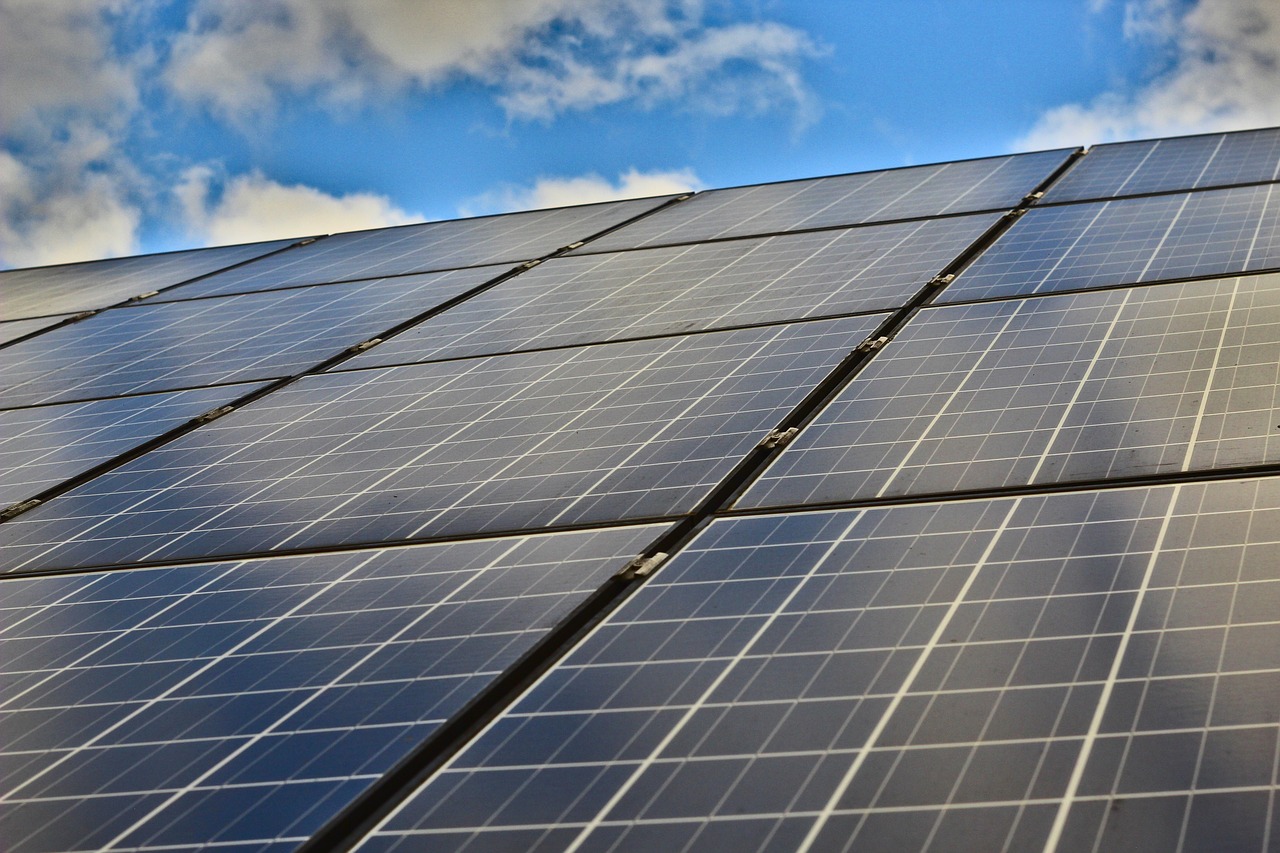
Solar Energy
harnesses the incredible power of the sun, converting sunlight into electricity through a process that is both fascinating and vital for our future. Imagine a world where the sun not only lights up our days but also powers our homes, cars, and industries. That's the promise of solar energy! With advancements in technology and decreasing costs, solar power has become a beacon of hope for achieving sustainable energy solutions.
At the heart of solar energy generation are photovoltaic (PV) cells, which are made from semiconductor materials that convert sunlight directly into electricity. These cells are the building blocks of solar panels, which can be installed on rooftops, in solar farms, or even integrated into building materials. The beauty of solar energy lies in its abundance; the sun emits enough energy in just one hour to power the entire planet for a year!
One of the most exciting aspects of solar energy is its rapid evolution. Recent innovations in photovoltaic technology have led to significant improvements in efficiency. For instance, the latest solar panels can convert over 22% of sunlight into electricity, a remarkable feat compared to earlier models. This increase in efficiency means that homeowners can generate more power from the same amount of sunlight, reducing their reliance on traditional energy sources and lowering their electricity bills.
As we delve deeper into photovoltaic technology, it’s essential to highlight some of the latest advancements that are reshaping the solar landscape. Researchers are exploring materials like perovskite, which promises even higher efficiency rates and lower production costs. Additionally, the integration of smart technology allows solar systems to optimize energy production based on real-time weather data, ensuring that users get the most out of their solar investments.
Another innovative method of harnessing solar energy is through Concentrated Solar Power (CSP) systems. These systems utilize mirrors or lenses to focus sunlight onto a small area, generating heat that can be converted into electricity. This process is not only efficient but also allows for energy storage, meaning that power can be generated even when the sun isn’t shining. The potential of CSP technology is vast, especially in regions with abundant sunlight, where it can provide a reliable and continuous power supply.
In summary, solar energy represents a transformative force in the quest for sustainable power generation. With ongoing advancements in technology, the future looks bright for solar energy. It not only offers a way to reduce our carbon footprint but also empowers individuals and communities to take control of their energy needs. As we embrace solar energy, we move closer to a world where clean, renewable power is the norm rather than the exception.
- What are the benefits of solar energy? Solar energy reduces electricity bills, decreases dependence on fossil fuels, and contributes to environmental sustainability.
- How do solar panels work? Solar panels convert sunlight into electricity using photovoltaic cells, which generate direct current (DC) electricity that is then converted to alternating current (AC) for use in homes and businesses.
- Is solar energy reliable? Yes, solar energy can be reliable, especially when combined with energy storage solutions like batteries, allowing for power generation even when the sun isn't shining.
- What is the lifespan of solar panels? Most solar panels come with a warranty of 25 years, but they can last much longer with proper maintenance.

Photovoltaic Technology
Photovoltaic (PV) technology is truly a game-changer in the realm of renewable energy. At its core, it involves converting sunlight directly into electricity using solar cells. These cells are often made from silicon, a material that has proven to be incredibly efficient at capturing solar energy. Over the years, significant advancements have been made in this technology, leading to increased efficiency and reduced costs, making solar energy more accessible than ever before.
One of the most exciting developments in photovoltaic technology is the emergence of high-efficiency solar cells. These cells can convert a larger portion of sunlight into electricity, which means that even smaller installations can generate substantial power. For instance, the latest models can achieve efficiencies exceeding 25%, compared to traditional cells that hover around 15-20%. This leap in efficiency not only maximizes energy production but also minimizes the space required for solar installations, making it an ideal solution for urban environments where space is at a premium.
Moreover, the cost of solar panels has plummeted over the past decade, largely due to technological innovations and increased manufacturing capabilities. This has resulted in a dramatic decrease in the levelized cost of electricity (LCOE) from solar power. To illustrate this, consider the following table that highlights the downward trend in solar panel prices over the years:
| Year | Average Price per Watt (USD) |
|---|---|
| 2010 | $3.00 |
| 2015 | $0.70 |
| 2020 | $0.20 |
| 2023 | $0.15 |
This table clearly shows how advancements in technology and economies of scale have made solar energy not just a viable option but a highly competitive one in the energy market. Furthermore, as more homeowners and businesses adopt solar technology, the demand for innovative solutions continues to grow.
In addition to efficiency and cost, there are also exciting developments in solar panel designs. For instance, BIPV (Building-Integrated Photovoltaics) systems are becoming increasingly popular. These systems integrate solar cells into building materials, such as windows and roofs, allowing buildings to generate their own electricity without sacrificing aesthetics. Imagine living in a home where your windows not only let in light but also power your appliances—it's a reality that's closer than you might think!
As we look to the future, the integration of artificial intelligence (AI) and machine learning into photovoltaic systems holds great promise. These technologies can optimize energy production by predicting weather patterns and adjusting the system's operation accordingly. This means that solar energy can be harnessed more effectively, ensuring that we make the most of every ray of sunshine.
In conclusion, photovoltaic technology stands at the forefront of the green energy revolution. Its continuous advancements are making solar power more efficient, affordable, and accessible, paving the way for a sustainable energy future. As we embrace these innovations, we are not just investing in technology; we are investing in our planet's health and the well-being of future generations.
- What is photovoltaic technology? - It is a method of converting sunlight directly into electricity using solar cells.
- How efficient are modern solar panels? - Modern solar panels can achieve efficiencies exceeding 25%.
- What are BIPV systems? - Building-Integrated Photovoltaics (BIPV) are solar cells integrated into building materials.
- How has the cost of solar panels changed over time? - The cost of solar panels has significantly decreased, making solar energy more competitive.

Concentrated Solar Power
Concentrated Solar Power (CSP) is a remarkable technology that harnesses the sun's energy in a unique way, transforming sunlight into usable electricity. Unlike traditional solar panels that directly convert sunlight into electricity, CSP systems use mirrors or lenses to focus a large area of sunlight, creating heat. This heat is then used to produce steam that drives a turbine connected to a generator, ultimately generating electricity. It's like having a magnifying glass that not only focuses sunlight but also converts it into power! This method of harnessing solar energy has gained traction due to its ability to produce electricity even when the sun isn't shining, thanks to thermal energy storage systems.
One of the most significant advantages of CSP is its scalability. CSP plants can be built at various sizes, from small installations that power local communities to large-scale facilities that contribute significantly to national grids. Moreover, CSP has the potential to generate electricity at a lower cost as technology advances and economies of scale are realized. According to recent studies, the cost of CSP has been decreasing steadily, making it an attractive option for both investors and governments looking to expand their renewable energy portfolios.
However, CSP isn't without its challenges. The technology requires a substantial amount of land, and its efficiency can be affected by geographical and climatic conditions. For instance, CSP systems are most effective in areas with high direct sunlight, such as deserts. This means that while CSP can be a powerful tool for green energy, its deployment must be carefully planned to maximize its potential. Furthermore, the initial capital investment for CSP plants can be significant, which may deter some investors. Yet, as the world shifts towards renewable energy, the long-term benefits and decreasing costs could outweigh these initial hurdles.
In conclusion, Concentrated Solar Power stands as a beacon of innovation in the realm of renewable energy. Its ability to generate power sustainably while providing a solution to energy storage challenges makes it a crucial player in the green energy landscape. As technology continues to evolve, CSP has the potential to play an even more significant role in our transition to a sustainable energy future.
- What is Concentrated Solar Power (CSP)?
CSP is a technology that uses mirrors or lenses to focus sunlight to generate heat, which is then converted into electricity. - How does CSP differ from traditional solar panels?
Unlike traditional solar panels that convert sunlight directly into electricity, CSP systems generate heat first, which is then used to produce electricity. - What are the advantages of CSP?
CSP systems can store thermal energy, allowing them to produce electricity even when the sun isn't shining. They are also scalable and can be built in various sizes. - What are the challenges associated with CSP?
CSP requires a lot of land and is most effective in areas with high direct sunlight. The initial investment can also be significant.
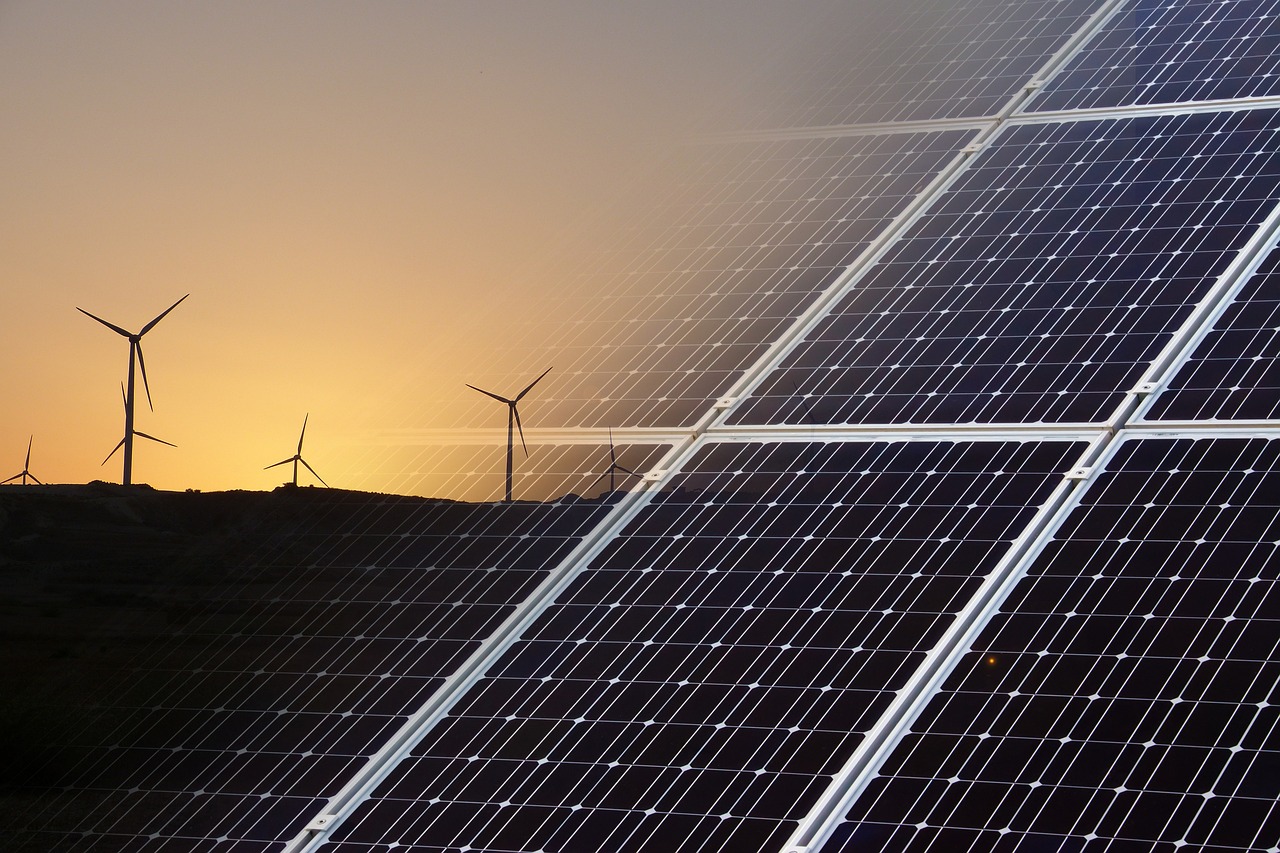
Wind Energy
Wind energy is one of the most promising forms of renewable energy, capturing the kinetic energy produced by moving air and converting it into electricity. Imagine standing on a hilltop, feeling the breeze on your face; that very wind can now power your home! This technology has rapidly gained traction over the past few decades and is now a vital part of the global energy mix. With wind turbines popping up in fields and offshore locations, it’s hard to ignore how this clean energy source is changing the landscape of power generation.
One of the most remarkable aspects of wind energy is its scalability. From small residential turbines that can power a single home to massive wind farms that generate electricity for thousands, the versatility of wind power is impressive. In fact, according to the Global Wind Energy Council, the installed capacity of wind energy worldwide reached over 743 gigawatts in 2020, illustrating its growing importance in the quest for sustainable energy solutions.
Moreover, wind energy is not just a one-size-fits-all solution. It offers various types of turbines designed for different environments and energy needs. For instance, onshore wind farms are typically located in rural areas where space is abundant, while offshore wind farms take advantage of the stronger and more consistent winds found over oceans. This means that energy generation can be optimized based on geographic and climatic conditions, ensuring that we harness the maximum potential of this resource.
However, while the benefits of wind energy are significant, it’s essential to acknowledge the challenges it faces. Issues such as intermittency—the fact that the wind doesn’t always blow—can lead to fluctuations in energy supply. This is where effective energy storage solutions come into play, allowing us to store excess energy generated during windy periods for use when the wind dies down. Additionally, the development of infrastructure to support wind energy, such as transmission lines and grid enhancements, is critical to ensuring that this energy can be efficiently distributed to where it’s needed most.
In summary, wind energy stands as a beacon of hope in our transition toward a more sustainable future. With its vast potential and the ability to adapt to various environments, it’s no wonder that wind power is becoming a cornerstone of modern energy strategies. As we continue to innovate and overcome the challenges associated with its implementation, wind energy will undoubtedly play a pivotal role in how we generate power in the years to come.
- What are the main advantages of wind energy? Wind energy is renewable, reduces greenhouse gas emissions, and can create jobs in manufacturing and maintenance.
- How does wind energy impact wildlife? While there are concerns about birds and bats, modern turbine designs and careful siting can minimize these impacts.
- Can wind energy be stored? Yes, energy storage systems, such as batteries, can store excess energy generated during windy days for later use.
- Is wind energy cost-effective? Yes, the cost of wind energy has decreased significantly, making it one of the most affordable sources of electricity in many regions.
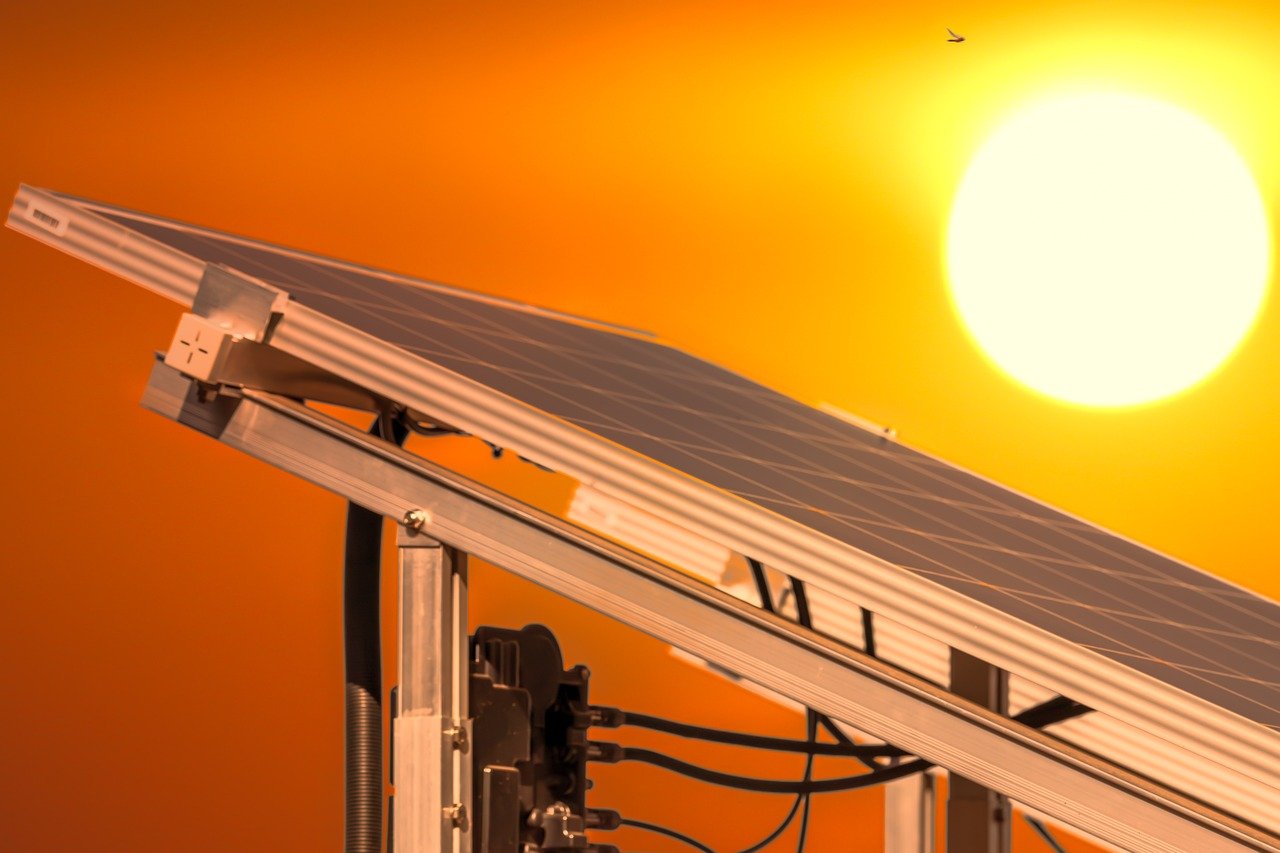
Challenges Facing Green Energy
While the promise of green energy is undeniably exciting, it’s not all sunshine and rainbows. There are significant challenges that must be addressed to fully realize the potential of renewable energy sources. One of the most pressing issues is the intermittency of energy generation. Unlike traditional fossil fuels, which can provide a constant supply of energy, renewable sources like solar and wind are dependent on environmental conditions. For example, the sun doesn’t always shine, and the wind doesn’t always blow. This variability can lead to periods of low energy production, raising concerns about reliability.
To tackle these challenges, effective energy storage solutions are essential. Energy storage technology, such as batteries, allows excess energy generated during peak production times to be stored and used when generation dips. This is crucial for balancing supply and demand in renewable energy systems. Without efficient storage systems in place, the promise of green energy could fall short, leading to potential energy shortages during high-demand periods.
Another critical hurdle is the need for infrastructure development. The transition to a greener energy landscape requires significant upgrades to our existing power grid and transportation systems. Currently, many grids are not equipped to handle the influx of renewable energy, which can lead to inefficiencies and increased costs. For instance, integrating renewable sources into the grid often requires new transmission lines and substations, which can be both time-consuming and costly to develop.
To illustrate the scale of the challenge, consider the following table that outlines some of the key challenges and potential solutions in green energy:
| Challenge | Potential Solution |
|---|---|
| Intermittency of Energy Generation | Invest in advanced energy storage technologies |
| Infrastructure Development | Upgrade existing power grids and build new transmission lines |
| High Initial Costs | Government incentives and subsidies for renewable projects |
| Public Resistance | Education and awareness campaigns on the benefits of green energy |
Moreover, the initial costs of renewable energy technologies can be a barrier to widespread adoption. Although prices for solar panels and wind turbines have decreased significantly over the years, the upfront investment can still be daunting for many businesses and households. This is where government policies come into play, offering incentives and subsidies to encourage investment in renewable energy projects.
Lastly, there is often public resistance to new energy projects. NIMBYism (Not In My Back Yard) can hinder the development of renewable energy facilities, as local communities may oppose projects due to concerns about aesthetics, noise, or environmental impact. Overcoming this resistance requires effective communication and education about the long-term benefits of green energy, not just for the environment, but for local economies and job creation as well.
In conclusion, while green energy holds immense potential for transforming our power generation landscape, it is not without its challenges. Addressing issues like intermittency, infrastructure needs, initial costs, and public resistance is vital for paving the way toward a sustainable energy future.
- What is green energy? Green energy refers to energy sources that are renewable and have a minimal impact on the environment, such as solar, wind, and hydro power.
- Why is green energy important? Green energy is crucial for reducing greenhouse gas emissions, combating climate change, and promoting sustainable development.
- What are the main challenges facing green energy? The main challenges include intermittency of energy generation, infrastructure development, high initial costs, and public resistance.
- How can we overcome these challenges? Solutions include investing in energy storage technologies, upgrading infrastructure, providing government incentives, and increasing public awareness and education.
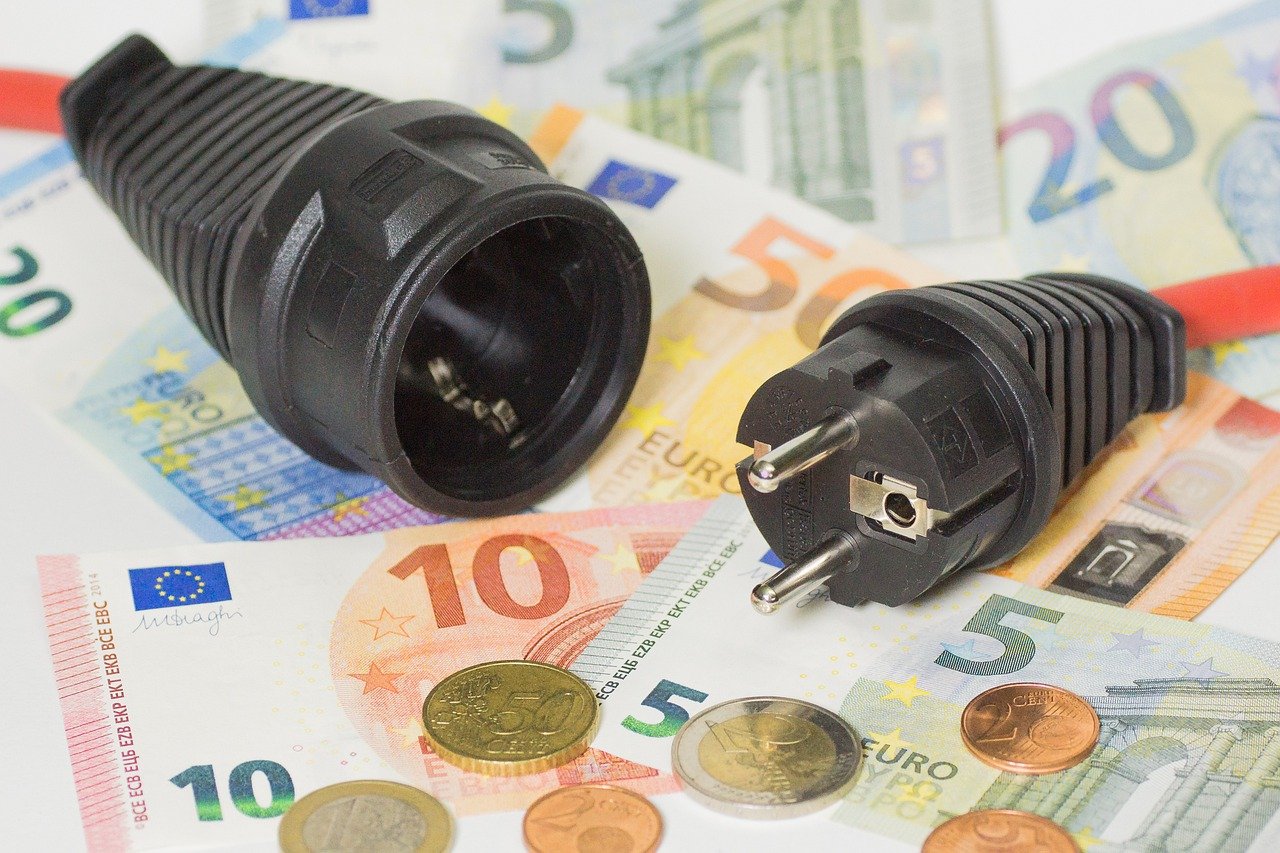
Energy Storage Solutions
When we talk about green energy, one of the biggest hurdles we face is the intermittency of renewable sources like solar and wind. Imagine trying to fill a bucket with water while the faucet is only occasionally turned on; that’s the challenge we encounter with energy generation from these sources. This is where come into play, acting as a bridge to balance the supply and demand of electricity. Without effective storage, we risk wasting the energy produced during peak generation times and not having enough during periods of low production.
Energy storage technologies are essential for ensuring a reliable power supply. They allow us to capture excess energy generated during sunny or windy days and store it for later use. Some of the most effective energy storage solutions currently in use include:
- Batteries: Lithium-ion batteries are the most widely recognized, powering everything from electric vehicles to home solar systems. They are efficient and can store large amounts of energy, but their production and disposal raise environmental concerns.
- Pumped Hydro Storage: This method uses excess electricity to pump water uphill to a reservoir. When energy is needed, the water is released, generating electricity as it flows back down. It’s like having a giant water battery!
- Compressed Air Energy Storage (CAES): This innovative solution compresses air in underground caverns during times of low demand. When energy is needed, the compressed air is heated and expanded to drive turbines, generating electricity.
Each of these solutions has its own set of advantages and challenges. For instance, while batteries are great for short-term storage, they may not be suitable for long-term energy needs due to their limited capacity and lifespan. On the other hand, pumped hydro storage requires specific geographical conditions, which may not be available everywhere.
Moreover, the development of smart grid technology is transforming how we think about energy storage. Smart grids can optimize the distribution of energy based on real-time data, making it easier to integrate various storage solutions. This means that energy can be stored when demand is low and dispatched when demand peaks, ensuring that we make the most of our renewable energy sources.
In conclusion, energy storage solutions are not just a luxury; they are a necessity for a sustainable future. As technology continues to advance, we can expect to see more efficient and affordable storage options emerge, paving the way for a cleaner, greener energy landscape.
- What is energy storage? Energy storage refers to capturing energy produced at one time for use at a later time. It plays a crucial role in balancing supply and demand in renewable energy systems.
- Why is energy storage important for renewable energy? Energy storage is essential for addressing the intermittency of renewable sources, allowing us to store excess energy generated during peak times and use it when production is low.
- What are the most common types of energy storage? The most common types include batteries (like lithium-ion), pumped hydro storage, and compressed air energy storage.
- How does smart grid technology enhance energy storage? Smart grids optimize the distribution of energy based on real-time data, allowing for better integration of storage solutions and more efficient energy use.

Infrastructure Development
When we talk about green energy, we often envision solar panels gleaming in the sun or wind turbines spinning gracefully against a blue sky. But behind these picturesque images lies a complex web of that is crucial for harnessing and distributing this renewable power. It's like building the roads for a new highway; without them, the cars (or in this case, energy) can't get to where they need to go. The transition to a more sustainable power generation landscape hinges on creating a robust infrastructure that can support the unique demands of green energy sources.
One of the primary challenges is the need for grid enhancements. Traditional power grids were designed for a centralized model of energy production, typically relying on fossil fuels. However, green energy sources such as solar and wind are often decentralized and variable. This means that we need to upgrade our existing grids to be more flexible and capable of handling the fluctuations in energy supply. Imagine trying to pour water from a wide bucket into a narrow glass; without the right adjustments, you’ll end up with a mess. Similarly, we need to ensure our energy grid can efficiently manage the flow from multiple renewable sources.
Moreover, the development of new transportation systems is essential. As green energy generation grows, so does the need to transport this energy from production sites to consumers. This involves not just electrical transmission lines but also the infrastructure for energy storage systems, which can store excess energy generated during peak production times. Think of it as a reservoir that collects rainwater during a storm, allowing for a steady supply even during dry spells. By investing in advanced storage technologies, we can ensure that energy is available when it’s needed most, regardless of when it was generated.
In addition, local and regional governments must collaborate to create a cohesive plan for infrastructure development. This includes zoning laws, permitting processes, and investment in public utilities. The goal is to create a seamless integration of renewable energy sources into the existing power framework, much like fitting puzzle pieces together to reveal a complete picture. Without this collaboration, we risk fragmented efforts that could hinder the overall transition to green energy.
Finally, it’s important to consider the economic implications of infrastructure development for green energy. By investing in these projects, we not only create jobs but also stimulate local economies. The construction and maintenance of renewable energy infrastructure can lead to a significant increase in employment opportunities, providing a boost to communities and promoting sustainable growth. As we move forward, it’s essential to keep in mind that a strong infrastructure is not just a necessity; it’s an investment in our future.
- What is green energy? Green energy refers to energy that is generated from natural, renewable sources that have a minimal impact on the environment.
- Why is infrastructure development important for green energy? Infrastructure development is crucial for efficiently harnessing, storing, and distributing green energy, ensuring that it can meet consumer demands.
- What are the challenges in developing green energy infrastructure? Key challenges include upgrading existing grids, creating energy storage solutions, and ensuring collaboration among local and regional governments.
- How can green energy infrastructure benefit the economy? Investing in green energy infrastructure creates jobs and stimulates local economies, promoting sustainable growth.

The Role of Government Policies
Government policies are the backbone of the green energy movement, acting as the guiding force that shapes the landscape of renewable power generation. Without the right policies in place, the transition to greener energy sources could be slow and fraught with challenges. Imagine trying to build a house without a blueprint; that’s what the renewable energy sector would look like without effective government intervention. Policies not only provide direction but also create a supportive environment that encourages innovation and investment in green technologies.
One of the most significant ways governments can promote green energy is through incentives. These incentives can take various forms, including tax credits, grants, and subsidies. For instance, many countries offer tax credits to homeowners who install solar panels, making it financially feasible for them to invest in renewable energy. This not only helps individuals save money but also contributes to a larger shift towards sustainable energy practices. According to recent studies, regions with robust incentive programs have seen a marked increase in renewable energy installations, demonstrating the effectiveness of financial support.
In addition to financial incentives, a well-defined regulatory framework is crucial for ensuring the reliability and sustainability of green energy initiatives. Governments need to establish clear guidelines that outline how renewable energy projects can be developed and integrated into existing power systems. This includes regulations on grid access, environmental assessments, and safety standards. A transparent regulatory framework not only fosters trust among investors but also ensures that projects are executed responsibly, minimizing potential negative impacts on the environment.
Moreover, government policies can stimulate research and development in the green energy sector. By allocating funds for research initiatives, governments can encourage innovation that leads to new technologies and improved efficiencies. For example, investments in battery storage technology can help address one of the major challenges facing renewable energy: intermittency. As we know, the sun doesn’t always shine, and the wind doesn’t always blow. By advancing storage solutions, governments can help ensure that green energy is available even when generation is low.
To illustrate the impact of government policies on green energy, consider the following table that highlights the correlation between policy initiatives and renewable energy adoption rates in various countries:
| Country | Incentives Offered | Renewable Energy Adoption Rate (%) |
|---|---|---|
| Germany | Feed-in tariffs, tax credits | 42 |
| United States | Investment tax credits, grants | 20 |
| China | Subsidies, renewable energy targets | 30 |
| India | Tax exemptions, feed-in tariffs | 25 |
This table demonstrates that countries with comprehensive and supportive policies tend to have higher adoption rates of renewable energy. It’s clear that when governments prioritize green energy through effective policies, they can significantly influence the transition towards a more sustainable future.
In conclusion, the role of government policies in promoting green energy cannot be overstated. From providing financial incentives to establishing regulatory frameworks and fostering research, these policies are vital for creating a conducive environment for renewable energy growth. As we continue to grapple with the challenges of climate change, it is imperative that governments worldwide recognize their responsibility in leading the charge towards a greener, more sustainable future.
- What are the main types of incentives for green energy? Incentives can include tax credits, grants, subsidies, and feed-in tariffs that encourage investment in renewable energy projects.
- How do government policies influence renewable energy adoption? Effective policies create a supportive environment that encourages investment, innovation, and the development of renewable energy technologies.
- What challenges does green energy face without government support? Without government support, green energy projects may struggle with funding, regulatory hurdles, and lack of public awareness, hindering their growth and adoption.
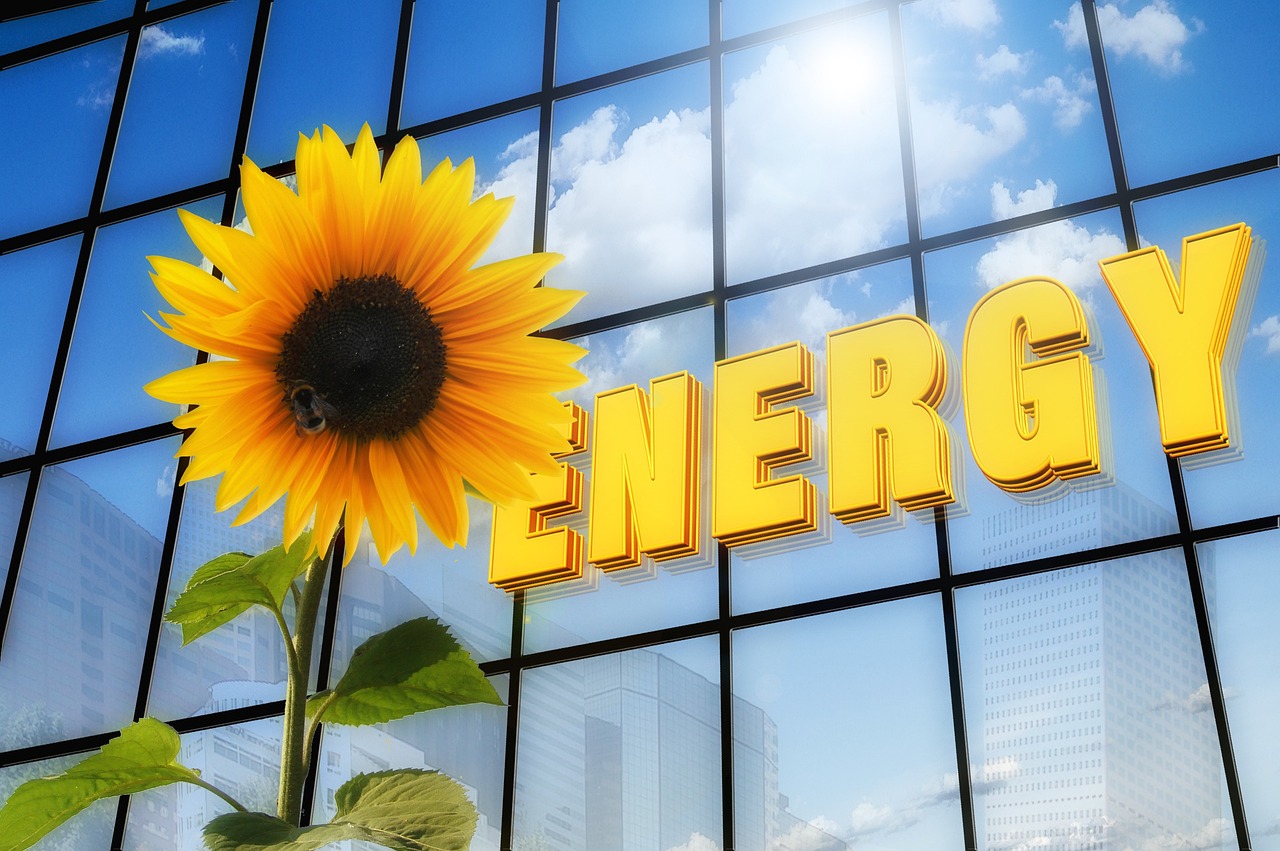
Incentives for Renewable Energy
In the quest for a sustainable future, government incentives for renewable energy are like a breath of fresh air. They play a pivotal role in encouraging both individuals and businesses to invest in green technologies. By reducing the financial burden associated with the initial costs of renewable energy projects, these incentives can make a significant difference. Imagine trying to climb a steep hill without any support; that’s what transitioning to renewable energy can feel like without these financial boosts.
One of the most common forms of incentives is tax credits. These are reductions in the amount of tax owed, allowing homeowners and businesses to recoup a portion of their investment in solar panels, wind turbines, or other renewable technologies. For instance, the federal solar tax credit allows homeowners to deduct a substantial percentage of the cost of solar installations from their federal taxes. This not only lowers the upfront cost but also speeds up the return on investment.
Another significant form of support comes in the shape of subsidies. These are direct financial contributions from the government that help offset the costs of renewable energy projects. By providing subsidies, governments can effectively lower the price of renewable energy technologies, making them more accessible to the average consumer. For example, many countries have implemented feed-in tariffs, which guarantee a fixed payment for energy produced from renewable sources, thus encouraging more people to adopt these technologies.
In addition to tax credits and subsidies, grants are also an essential part of the incentive landscape. These are funds provided by the government that do not need to be repaid, aimed at supporting research and development in renewable energy technologies. Such grants can help companies innovate and create more efficient systems, ultimately leading to lower costs and increased adoption of green energy solutions.
Moreover, state and local incentives can vary greatly, providing additional layers of support. Some regions offer rebates for energy-efficient appliances, while others might have specific programs aimed at increasing the installation of solar energy systems. This localized approach allows communities to tailor their renewable energy strategies based on unique needs and available resources.
To summarize, the variety of incentives available today is crucial for accelerating the transition to renewable energy. They not only make green technologies more affordable but also stimulate job creation in the renewable sector. As more people and businesses take advantage of these incentives, the shift toward a sustainable energy future becomes increasingly achievable. The table below outlines some common incentives available in various regions:
| Incentive Type | Description | Examples |
|---|---|---|
| Tax Credits | Reductions in tax owed based on investment in renewable energy. | Federal Solar Tax Credit, Investment Tax Credit (ITC) |
| Subsidies | Direct financial contributions to offset costs of renewable energy projects. | Feed-in Tariffs, Renewable Energy Certificates (RECs) |
| Grants | Funds provided for research and development that do not require repayment. | Department of Energy Grants, State Energy Program Grants |
| Local Incentives | Region-specific programs aimed at promoting renewable energy adoption. | Utility rebates, local tax exemptions |
As we look to the future, it’s clear that these incentives will continue to play a vital role in shaping the renewable energy landscape. By making green technologies more accessible and affordable, they not only foster a cleaner environment but also empower individuals and businesses to take charge of their energy consumption.
- What are renewable energy incentives? These are financial benefits provided by the government to encourage the adoption of renewable energy technologies.
- How do tax credits work? Tax credits reduce the amount of tax you owe based on your investment in renewable energy, effectively lowering your overall costs.
- Are there incentives for businesses? Yes, many incentives apply to businesses, including tax credits, grants, and subsidies designed to promote renewable energy investments.
- How can I find out what incentives are available in my area? Check with local and state government websites or energy agencies to learn about specific programs and incentives available to you.

Regulatory Frameworks
The landscape of green energy is significantly shaped by that govern how renewable energy projects are developed, funded, and integrated into existing power systems. These frameworks are crucial for ensuring that green energy initiatives are not only sustainable but also reliable and effective. Without a solid regulatory foundation, the transition to renewable energy could face numerous hurdles, from financing issues to operational inefficiencies.
One of the primary roles of regulatory frameworks is to establish clear guidelines for renewable energy developers. This includes everything from permitting processes to environmental assessments. Such guidelines help streamline project development, making it easier for companies to navigate the complexities of launching renewable energy initiatives. For instance, a well-defined permitting process can significantly reduce the time it takes to get a project off the ground, which is vital in a rapidly evolving energy market.
Moreover, regulatory frameworks often include incentives designed to encourage investment in renewable energy. These incentives can take various forms, such as tax credits, grants, or feed-in tariffs, which guarantee a fixed price for the energy generated from renewable sources. By providing financial support, governments can lower the barriers to entry for new projects, making it more attractive for investors to put their money into green energy solutions.
However, regulatory frameworks must also ensure that these incentives do not lead to market distortions. For example, if one type of renewable energy receives excessive subsidies while others do not, it could create an uneven playing field that stifles competition. Therefore, a balanced approach is essential, where all forms of green energy are given fair opportunities to thrive.
In addition to incentives, the regulatory landscape must address interconnection standards. These standards dictate how renewable energy sources connect to the grid, ensuring that energy can flow seamlessly from producers to consumers. Effective interconnection policies are critical for integrating renewable energy into the existing power infrastructure, allowing for a smoother transition to a greener energy mix.
Furthermore, regulatory frameworks should also include provisions for consumer protection. As more consumers choose to adopt renewable energy solutions, such as solar panels or wind turbines, regulations must ensure that these technologies are safe, reliable, and fairly priced. Consumer protection laws help build trust in renewable energy markets, encouraging more people to make the switch to greener options.
In summary, the role of regulatory frameworks in the green energy sector cannot be overstated. They provide the necessary structure and guidelines for the development of renewable energy projects, incentivize investment, and ensure that consumers are protected. As the world moves towards a more sustainable energy future, robust regulatory frameworks will be essential for fostering innovation and facilitating the growth of green energy.
- What are regulatory frameworks in green energy? Regulatory frameworks are guidelines and rules established by governments to govern the development, funding, and integration of renewable energy projects.
- Why are incentives important in renewable energy? Incentives lower the financial barriers for investors, making it easier to fund and develop renewable energy projects.
- How do interconnection standards affect renewable energy? Interconnection standards ensure that renewable energy sources can connect to the power grid smoothly, facilitating the flow of energy from producers to consumers.
- What is consumer protection in the context of green energy? Consumer protection laws ensure that renewable energy technologies are safe, reliable, and fairly priced for consumers.
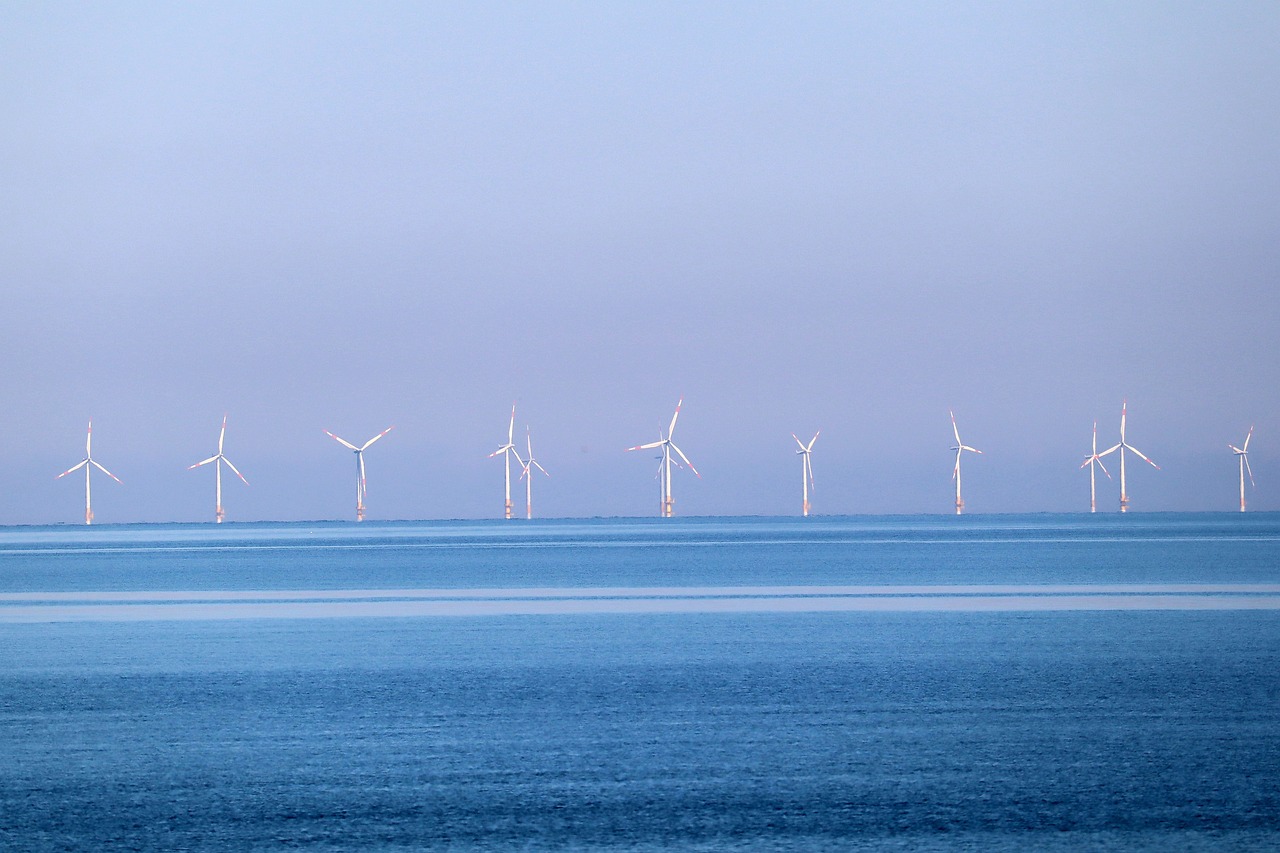
Future Trends in Green Energy
As we look towards the horizon of power generation, the future of green energy is not just a flicker of hope; it’s a blazing trail of innovation and transformation. The landscape of energy production is rapidly evolving, and several exciting trends are emerging that promise to reshape how we harness and utilize renewable resources. One of the most notable trends is the integration of smart grid technology, which enhances the efficiency of energy distribution and consumption. Imagine a network that not only delivers energy but also communicates with users to optimize usage patterns based on real-time data. This is not science fiction; it’s happening now!
Another significant trend is the advancement of energy management systems. These systems employ sophisticated algorithms and artificial intelligence to analyze energy consumption patterns, allowing businesses and households to make informed decisions about their energy use. As a result, we can expect a dramatic reduction in waste and a more sustainable approach to energy consumption. For instance, companies are now able to forecast their energy needs accurately, aligning their consumption with the availability of renewable energy sources.
Furthermore, the global push for sustainability is fostering international collaboration on green energy initiatives. Countries are sharing knowledge and best practices, working together to combat climate change and promote sustainable development. This collaboration is crucial, as it allows nations to learn from each other’s successes and failures, accelerating the transition to a greener future. For example, countries with advanced solar technologies can assist those still developing their renewable energy infrastructure, creating a win-win situation for all involved.
Additionally, we are witnessing a surge in decentralized energy systems. Instead of relying solely on large power plants, communities are increasingly adopting localized energy solutions such as solar panels and wind turbines. This shift not only empowers individuals and communities but also enhances resilience against outages and fluctuations in energy supply. Picture a neighborhood where homes produce their own energy, sharing excess power with each other, creating a self-sufficient and sustainable energy ecosystem.
However, it’s essential to recognize that with these advancements come challenges. The need for robust energy storage solutions remains critical. As renewable energy sources like solar and wind are inherently intermittent, developing efficient storage systems is vital to ensure a steady supply of power. Innovations in battery technology, such as lithium-sulfur batteries and flow batteries, are on the rise, promising longer-lasting and more efficient energy storage options.
In conclusion, the future of green energy is bright and full of potential. With advancements in technology, increased collaboration, and a focus on sustainability, we are poised to make significant strides in how we generate and consume power. The journey towards a greener future is not just about adopting new technologies; it’s about rethinking our relationship with energy and embracing a sustainable lifestyle that benefits both the planet and future generations.
- What is green energy? Green energy refers to energy that is produced from renewable, natural sources, such as solar, wind, hydro, and geothermal.
- Why is green energy important? Green energy is crucial for reducing greenhouse gas emissions, combating climate change, and promoting sustainable development.
- What are the main types of green energy? The main types of green energy include solar energy, wind energy, hydroelectric energy, and geothermal energy.
- What challenges does green energy face? Key challenges include intermittency, energy storage solutions, and the need for infrastructure development.
- How can governments promote green energy? Governments can promote green energy through incentives, regulations, and funding for renewable energy projects.
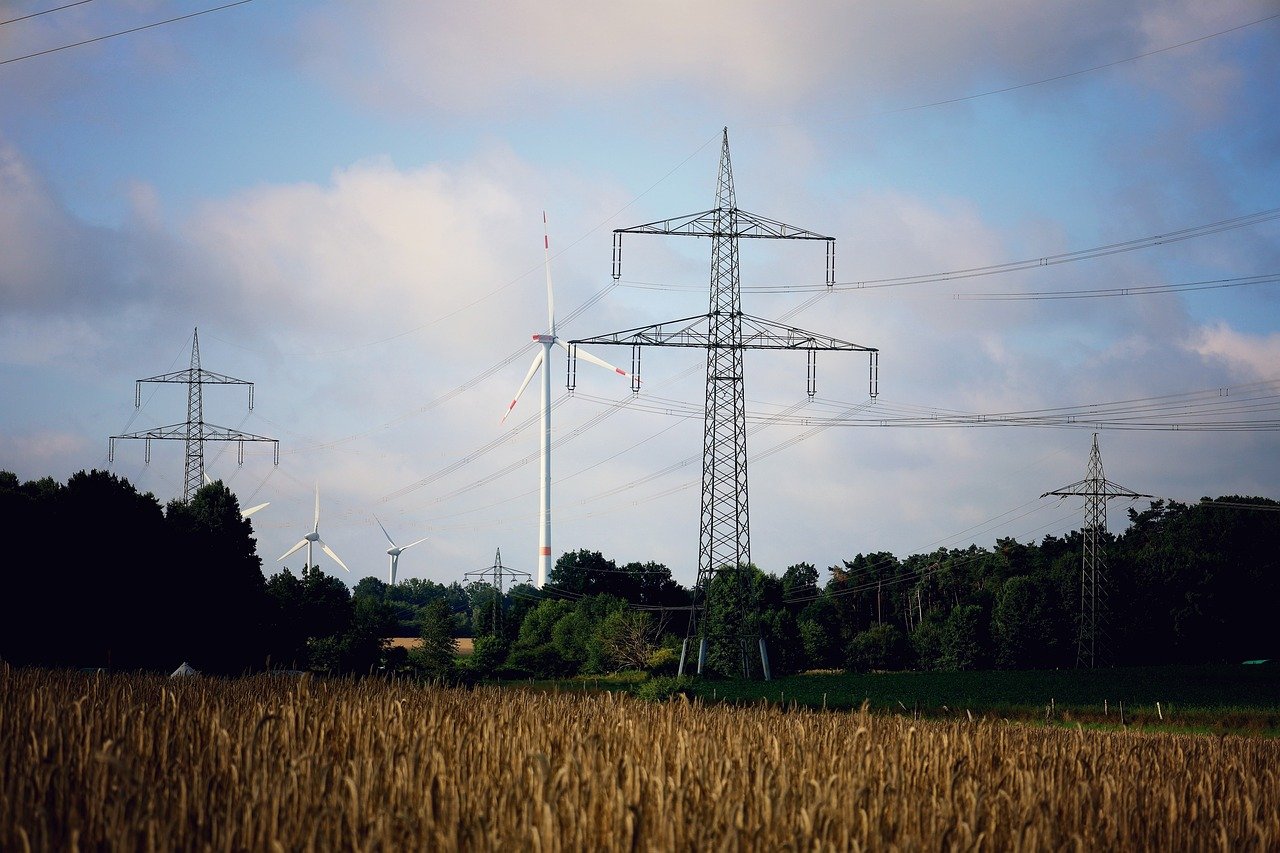
Advancements in Technology
As we look to the future of green energy, one of the most exciting aspects is the rapid that are transforming the landscape of power generation. These innovations are not just making renewable energy sources more efficient; they are also making them more accessible and affordable for everyone. Imagine a world where your home can run entirely on solar power, or where electric cars can be charged in minutes instead of hours—this is becoming a reality thanks to technological breakthroughs.
One of the key areas of advancement is the development of smart grids. These intelligent systems allow for real-time monitoring and management of energy supply and demand. By using advanced sensors and data analytics, smart grids can optimize energy distribution, reducing waste and improving efficiency. For example, during peak usage times, smart grids can automatically reroute energy from less busy areas to ensure that everyone has access to power. This technology is essential for integrating renewable sources like wind and solar, which can be intermittent.
Moreover, the emergence of energy management systems is revolutionizing how consumers and businesses interact with their energy consumption. These systems provide insights into energy use patterns, allowing users to adjust their habits and reduce costs. For instance, a household might learn that running the dishwasher during off-peak hours can save money and reduce strain on the grid. This kind of awareness is crucial in a world that increasingly values sustainability.
Another remarkable advancement is in battery technology. As we strive for a greener future, energy storage solutions are becoming more critical than ever. Innovations in lithium-ion batteries, for example, have led to longer-lasting and more efficient storage options. With improved battery capacity, we can store excess energy generated during peak sunlight hours for use at night or during cloudy days. This not only enhances the reliability of solar energy but also paves the way for electric vehicles to become mainstream.
To illustrate the impact of these advancements, consider the following table that highlights some key technologies and their benefits:
| Technology | Benefits |
|---|---|
| Smart Grids | Optimizes energy distribution, reduces waste, integrates renewable sources |
| Energy Management Systems | Provides insights into consumption, encourages sustainable habits |
| Advanced Battery Technology | Enhances energy storage, improves reliability of renewable sources |
As these technologies continue to evolve, we can expect to see even more innovative solutions that enhance the viability of green energy. The future holds exciting possibilities, and with ongoing research and investment, we are on the cusp of a significant transformation in how we generate and consume power. The integration of these technologies will not only help in meeting energy demands but also play a crucial role in combating climate change, making our planet a cleaner and healthier place to live.
- What is a smart grid? A smart grid is an advanced electrical grid that uses digital technology to monitor and manage the transport of electricity from all generation sources to meet the varying electricity demands of end users.
- How do energy management systems work? Energy management systems analyze energy consumption patterns and provide insights that help users optimize their energy use, potentially leading to cost savings and reduced environmental impact.
- What advancements are being made in battery technology? Innovations in battery technology include improvements in capacity, efficiency, and lifespan, enabling better energy storage solutions for renewable energy sources.

Global Collaboration Efforts
In the fight against climate change, the importance of global collaboration cannot be overstated. As countries strive to transition to greener energy sources, sharing knowledge, resources, and technologies becomes essential. Imagine a world where nations work hand in hand, combining their strengths to tackle one of the biggest challenges humanity has ever faced. This is not just a dream; it's a necessary reality for sustainable power generation.
One of the most significant aspects of global collaboration is the establishment of international agreements and partnerships aimed at promoting renewable energy development. Initiatives such as the Paris Agreement have set the stage for countries to commit to reducing greenhouse gas emissions and increasing their reliance on clean energy sources. These agreements not only foster cooperation but also create a framework for accountability and progress tracking. Countries can learn from each other's successes and failures, paving the way for more effective solutions.
Furthermore, organizations like the International Renewable Energy Agency (IRENA) play a pivotal role in facilitating this collaboration. IRENA provides a platform for knowledge exchange and capacity building among member countries, helping them to develop and implement renewable energy strategies. By pooling resources and expertise, nations can accelerate the deployment of green technologies and make significant strides towards their energy goals.
Moreover, public-private partnerships are emerging as a powerful force in the renewable energy sector. Companies are increasingly recognizing the value of collaborating with governments and NGOs to drive innovation and investment in green technologies. For instance, tech giants are partnering with energy providers to develop smart grids and energy management systems that optimize the use of renewable resources. This synergy between the public and private sectors can lead to groundbreaking advancements that benefit everyone.
To illustrate the impact of global collaboration, consider the following table showcasing some key international initiatives and their objectives:
| Initiative | Objective | Participating Countries |
|---|---|---|
| Paris Agreement | Limit global warming to below 2 degrees Celsius | 196 countries |
| IRENA | Promote the adoption of renewable energy | Over 160 countries |
| Clean Energy Ministerial | Accelerate the global transition to clean energy | 25 countries |
In addition to formal agreements, grassroots movements and local initiatives also contribute to global collaboration efforts. Communities around the world are coming together to advocate for renewable energy projects, sharing best practices and encouraging their governments to invest in sustainable infrastructure. This bottom-up approach complements top-down policies, creating a comprehensive strategy for tackling climate change.
Ultimately, the path to a sustainable energy future lies in our ability to collaborate on a global scale. By sharing knowledge, resources, and technologies, we can create a cleaner, greener planet for future generations. The challenges are immense, but with collective effort and commitment, we can turn the tide against climate change and ensure a sustainable energy landscape.
- What is global collaboration in renewable energy?
Global collaboration in renewable energy refers to the cooperative efforts of countries, organizations, and companies to share knowledge, technologies, and resources to promote the development and implementation of renewable energy solutions. - Why is global collaboration important for combating climate change?
Global collaboration is crucial because climate change is a worldwide issue that requires collective action. By working together, countries can leverage each other's strengths, learn from one another, and accelerate the transition to sustainable energy sources. - What are some examples of successful global collaboration initiatives?
Successful initiatives include the Paris Agreement, the International Renewable Energy Agency (IRENA), and the Clean Energy Ministerial, all of which aim to foster cooperation and promote renewable energy adoption.
Frequently Asked Questions
- What is green energy?
Green energy refers to energy derived from renewable sources that have a minimal impact on the environment. This includes energy from sources like solar, wind, hydro, and geothermal. Unlike fossil fuels, which release harmful emissions, green energy is considered sustainable and cleaner for the planet.
- How does solar energy work?
Solar energy works by capturing sunlight and converting it into electricity using photovoltaic cells. These cells are typically made of silicon and create an electric current when exposed to sunlight. Additionally, concentrated solar power systems use mirrors to focus sunlight, generating heat that can be used to produce electricity.
- What are the benefits of wind energy?
Wind energy is a clean and renewable resource that significantly contributes to reducing greenhouse gas emissions. It is scalable, meaning it can be implemented in both small and large projects, and the costs associated with wind energy have been decreasing, making it an increasingly attractive option for power generation.
- What challenges does green energy face?
Green energy faces several challenges, including intermittency, which refers to the variability of energy production (like when the sun isn’t shining or the wind isn’t blowing). Additionally, effective energy storage solutions are needed to balance supply and demand, and there’s a need for improved infrastructure to support the growth of renewable energy sources.
- How do government policies affect green energy?
Government policies play a crucial role in promoting green energy through incentives such as tax credits and subsidies. These policies can encourage investments in renewable energy projects, while regulatory frameworks ensure that these initiatives are reliable and sustainable, guiding their integration into existing power systems.
- What are some future trends in green energy?
Future trends in green energy include advancements in technology, such as the development of smart grids that enhance energy management and efficiency. Additionally, global collaboration on green energy initiatives is becoming increasingly important as countries work together to share knowledge and best practices in combating climate change.



















